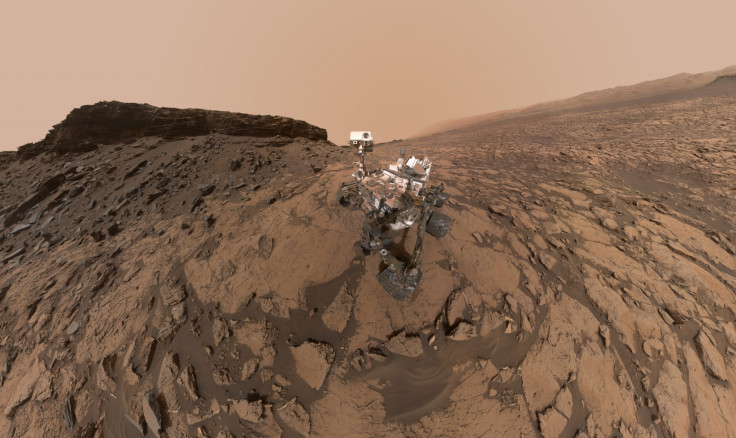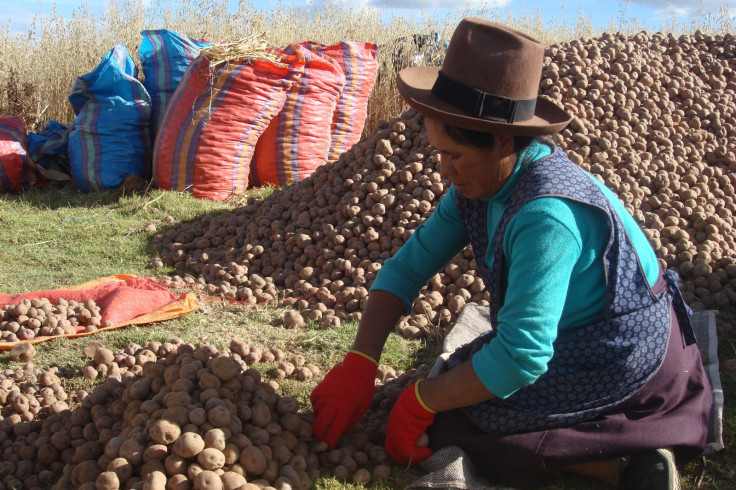First 'super potato' grown in Mars climate simulator
The tubers grew remarkably well in extremely dry soil under a Martian atmosphere simulated in a tiny, hermetically sealed box.
An experiment mimicking the environmental conditions on Mars has shown that potatoes could potentially grow on the Red planet.
Potatoes bred by the International Potato Center in Peru were grown in a CubeSat – a miniature satellite box – developed with Nasa. The CubeSat was on Earth but hermetically sealed so that that no air or water from Earth's atmosphere could be exchanged with the air in the box.
It mimicked the Martian day-night cycle, which is slightly longer than on Earth at 24 hours, 37 minutes and 22 seconds. The CubeSat also mimics the air pressure, oxygen and carbon dioxide levels of the Martian environment, which is unlike anywhere on Earth.
Air pressure on Mars is just a tiny fraction of what it is on Earth, as Mars has an extremely thin atmosphere equivalent to about 1% of Earth's. The gases that make up the atmosphere are also very different on Mars, where about 95% of the atmosphere is carbon dioxide – compared to about 0.04% carbon dioxide on Earth.
Martian temperatures at the equator can range from a comfortable 20C during the day to less than -70C at night. The International Potato Center told IBTimes UK that low temperatures were simulated in the CubeSat experiment, and they would gradually be made more extreme in later experiments.

The initial results of the experiment are said to be promising, with the potatoes sprouting up through the soil and appearing surprisingly healthy. However, lacking a supply of Martian soil, the potatoes were grown in very dry Earth soil, such as those found in the Peruvian desert.
"These are the most Mars-like soils found on Earth," said scientist Chris McKay of Nasa's Ames Research Center, who worked on the experiment.
"If the crops can tolerate the extreme conditions that we are exposing them to in our CubeSat, they have a good chance to grow on Mars," added Julio Valdivia-Silva, a researcher at the SETI Institute and the University of Engineering and Technology in Lima, Peru.
"We will do several rounds of experiments to find out which potato varieties do best. We want to know what the minimum conditions are that a potato needs to survive."

Although it doesn't look like we'll be growing things on Mars any time soon – even the first manned mission to Mars is still a long way off – the potatoes have actually been bred for use on Earth.
The more extreme the environment that the potatoes can withstand, the more robust they will be in areas affected by climate change, the researchers say. As well as being able to grow in extremely dry soils, the potatoes could also grow in soils with a very high salt content. In areas flooded by sea water, this could give them a crucial advantage.
"The results indicate that our efforts to breed varieties with high potential for strengthening food security in areas that are affected, or will be affected by climate change, are working," said Valdivia-Silva.
UPDATE 30 MARCH
After the first tentative shoots rising three weeks ago, the first fully developed potato has been grown in the simulator.
"It's a 'super potato' that resists very high carbon dioxide conditions and temperatures that get to freezing," said Valdiva-Silva.
Ray Wheeler ofNASA's Kennedy Space Centre said that the potatoes would need some assistance to grow on Mars, but could survive in a greenhouse environment providing some additional resources such as heat and oxygen. But the results show that the greenhouse would only have to be a compromise between Martian and Earth's conditions, as the spuds are proving to be surprisingly resilient.

© Copyright IBTimes 2025. All rights reserved.






















